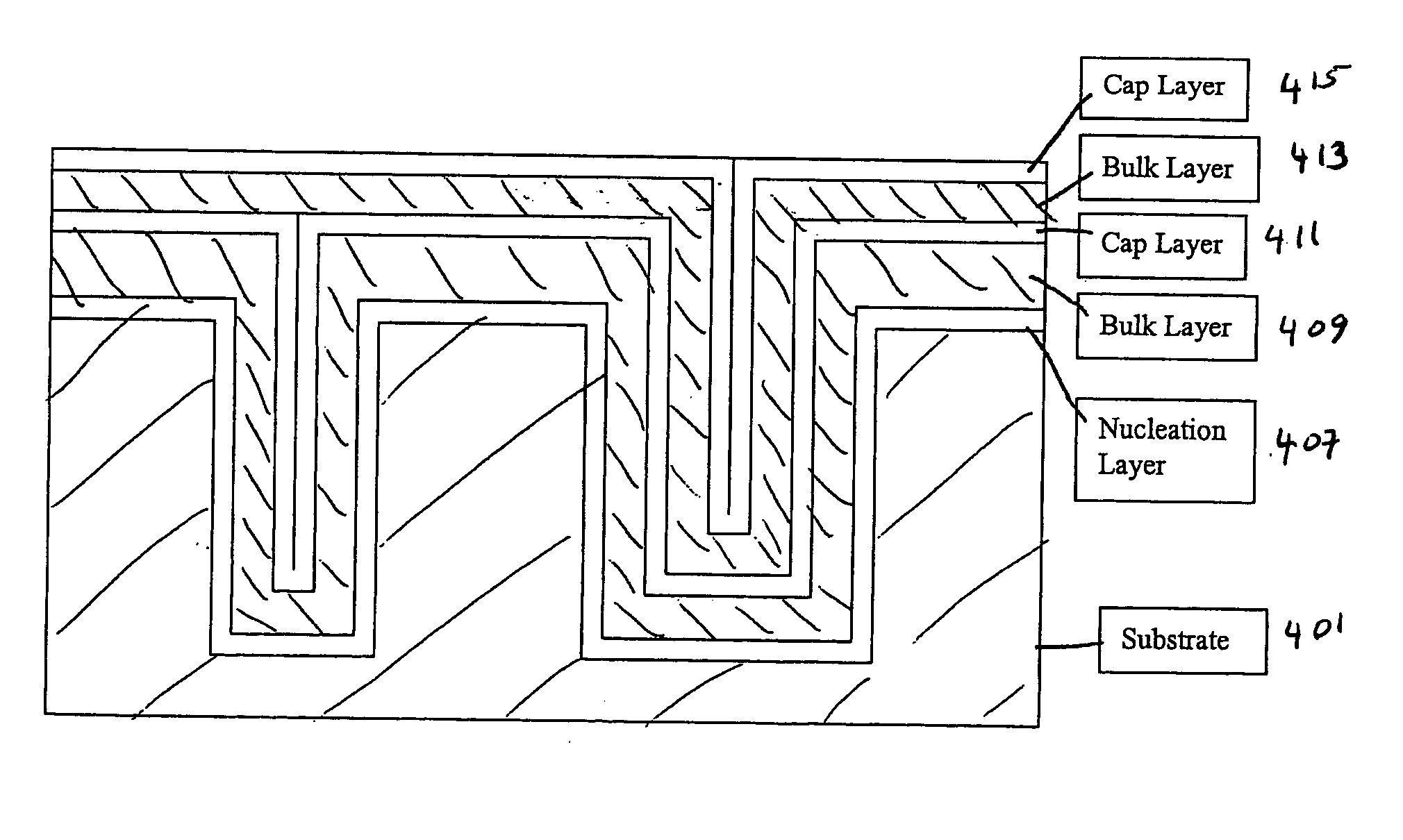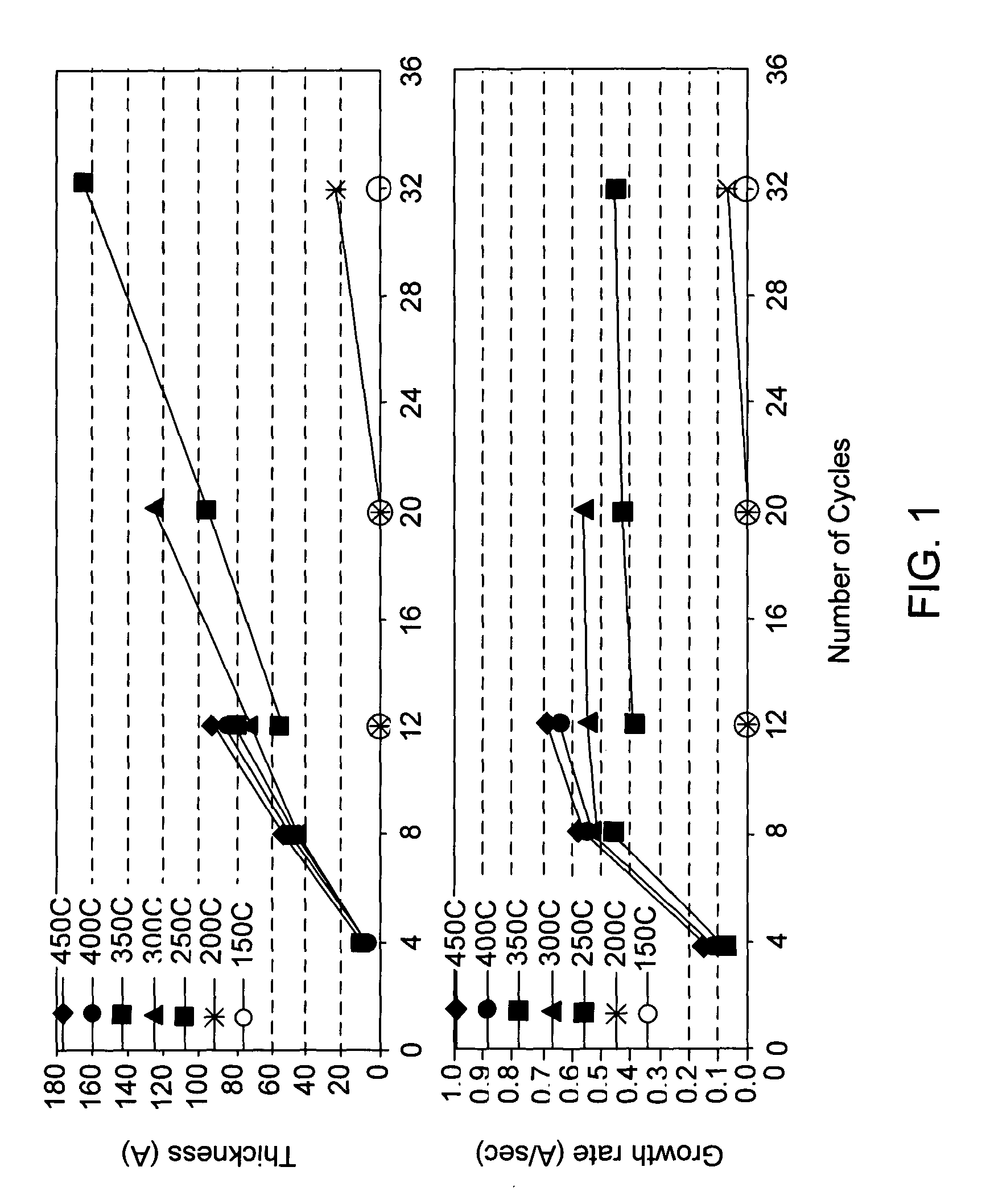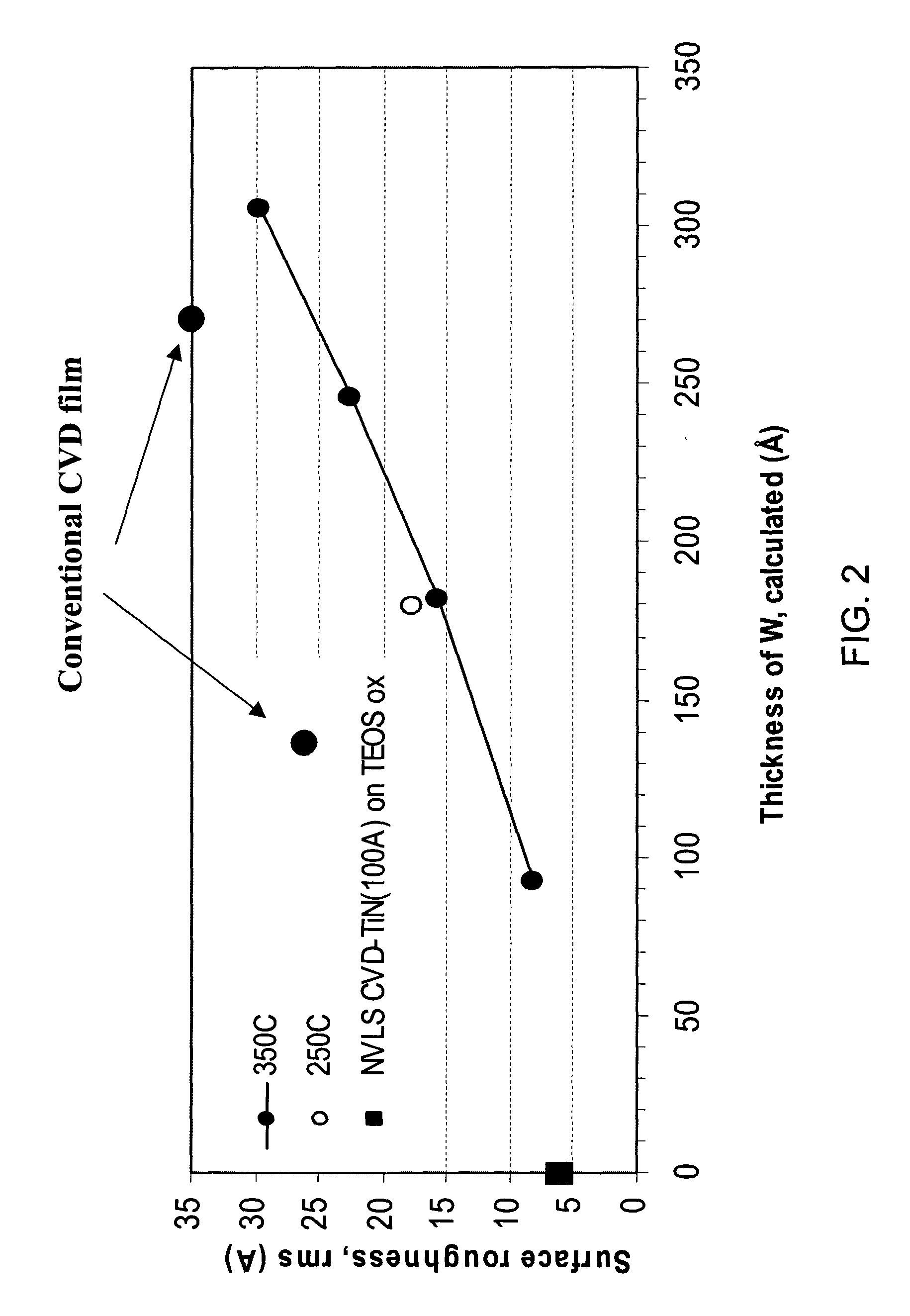Method for reducing tungsten film roughness and improving step coverage
a technology of tungsten film and step coverage, which is applied in the field of tungsten film formation, can solve the problems of reducing the sensitivity of pnl tungsten deposition process to variations in the surface conditions of semiconductor substrates, and achieves excellent step coverage and smoothness of pnl-w, and low resistivity of cvd-w. , the effect of high growth ra
- Summary
- Abstract
- Description
- Claims
- Application Information
AI Technical Summary
Benefits of technology
Problems solved by technology
Method used
Image
Examples
Embodiment Construction
Embodiments of the present invention will be described with reference to the aforementioned figures. These figures are simplified for ease of understanding and description of embodiments of the present invention only. Modifications, adaptations or variations of specific methods and or structures shown and discussed herein may become apparent to those skilled in the art. All such modifications, adaptations or variations that rely upon the teachings of the present invention, and through which these teachings have advanced the art, are considered to be within the spirit and scope of the present invention.
Introduction
The present invention provides improved methods of forming a tungsten layer on a semiconductor substrate. It accomplishes this by use of various techniques to control the tungsten deposition process. These include use of nitrogen as a process gas to control nucleation of tungsten, alternating PNL and CVD to form a tungsten layer, and use of a boron sacrificial layer to ...
PUM
| Property | Measurement | Unit |
|---|---|---|
| operating pressure | aaaaa | aaaaa |
| temperature | aaaaa | aaaaa |
| temperature | aaaaa | aaaaa |
Abstract
Description
Claims
Application Information
 Login to View More
Login to View More - R&D
- Intellectual Property
- Life Sciences
- Materials
- Tech Scout
- Unparalleled Data Quality
- Higher Quality Content
- 60% Fewer Hallucinations
Browse by: Latest US Patents, China's latest patents, Technical Efficacy Thesaurus, Application Domain, Technology Topic, Popular Technical Reports.
© 2025 PatSnap. All rights reserved.Legal|Privacy policy|Modern Slavery Act Transparency Statement|Sitemap|About US| Contact US: help@patsnap.com



